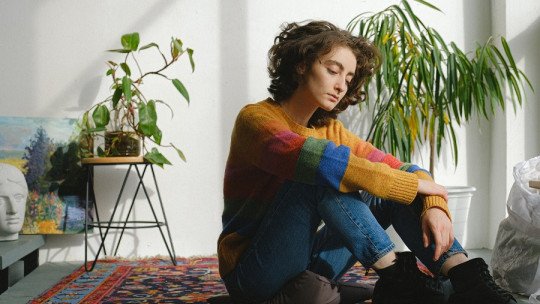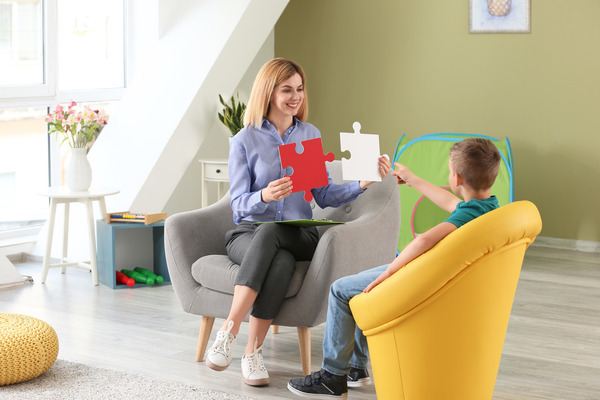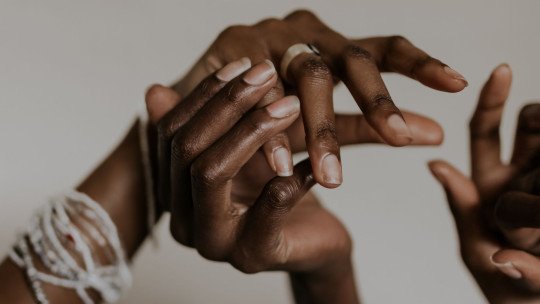ALL of our experience is based on the senses: how we hear, how we touch, how we see and how we taste life.
Today we wanted to talk to you about a topic that we consider very important and that is multisensory stimulation. As a result of one of the courses we teach, we came up with the idea of sharing an entry about it on our blog, in order to be able to share this knowledge with you.
As we told you, a few months ago we taught a Multisensory Stimulation course to a center that wanted to implement one of these rooms in its center. As we usually do at the end of the courses we teach, our students provide us with feedback on what they have learned. The conclusion they reached is that we give little importance to our senses, these being the basis of all vital experience and perception.
Let’s start by discovering what multisensory stimulation is. Thus, multisensory stimulation is the stimulation that our brain receives from different sensory pathways. It is essential to know that ALL of our experience is based on the senses: how we listen, how we touch, how we see, how we hear and how we taste life. That is why it is essential to know the real importance of each and every one of the sensory stimuli that surround us, since these stimuli are ALWAYS stimulating us to a lesser or greater extent.
What are multisensory stimulation rooms?
Sensory stimulation rooms, or Snoezelen, are a tool or resource that allows you to work on sensory awakening through action and experimentation. They represent a methodological change in the stimulation of boys and girls, people with disabilities and the elderly. In these rooms is where the person becomes the protagonist of their own learning, and the educator/therapist becomes a mediator of this process.
The intervention in Snoezelen spaces It appeared in Holland at the end of the 70s of the last century and spread throughout the world, especially in European countries, the United States, Canada and Australia, and recently in Asian countries. In Spain, intervention in Snoezelen spaces is widespread, especially in a very specific group, that of people with intellectual disabilities, but on the other hand, experiences in other fields are scarce.
The operation of each of the Snoezelen Multisensory Stimulation rooms must include each of these objectives:
1. Offer feelings of well-being to people with serious illnesses, where they could actively or passively interact with others.
2. Provide the person with pleasant experiences that promote their emotional well-being.
3. Increase your level of relaxation.
4. Reduction in the level of disruptive behaviors and, in general, unsatisfactory sensations.
Therefore, one of the goals of the Multisensory Stimulation Rooms is for the person to have a final feeling of well-being and comfort, reducing any discomfort they may experience, being passively guided through the experience by the therapist/educator.
Types of multisensory stimulation rooms
White Rooms
Multisensory stimulation rooms known as white rooms are those that are mostly composed of white stimuli. The objective of these rooms is the subject’s feeling of relaxation, security and comfort through neutral tones such as white. At the same time, it seeks to achieve stimulation of the person through discovery and spontaneity with the environment.
Therefore, the ultimate goal of using this type of room is the PASSIVE participation of the person.
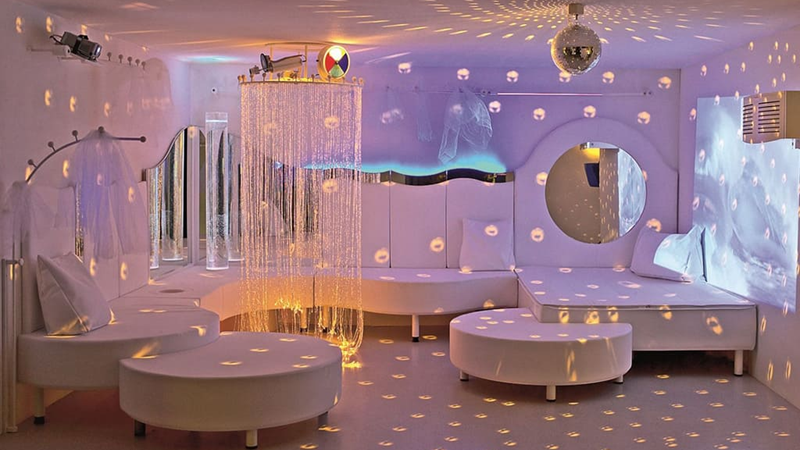
Dark Rooms
Multisensory stimulation rooms known as dark rooms are those that are characterized by a completely black or dark color, which contrasts with the use of fluorescent stimuli. Its main difference from the previous one is that bright elements are always used that stand out from the background.
The objective of using this type of multisensory stimulation rooms is the ACTIVE participation of the subject.
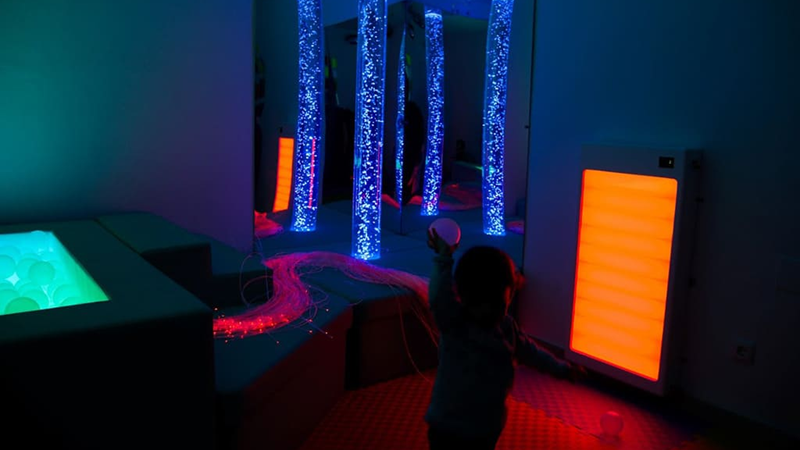
Adventure Rooms:
Finally we find the adventure rooms, these are characterized by being white in general and with colored elements inside. Above all, hanging elements or elements that require greater interaction at the psychomotor level. They are mainly focused on facilitating the perceptual motor and sensory activity of the person.
The objective of using this type of multisensory stimulation rooms is the ACTIVE participation of the subject.
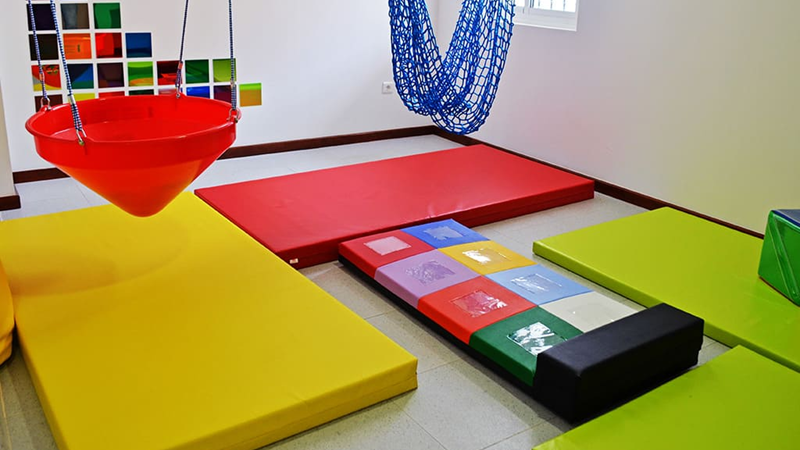
Essential requirements
However, there are a series of essential requirements to be able to carry out optimal multisensory stimulation. In this sense, it is essential to know that there are a series of aspects that ensure that stimulation is carried out optimally.
On the one hand, it is recommended to have several multisensory stimulation rooms within the same center in order to be able to offer different stimulation spaces. We usually have in mind that the ideal multisensory stimulation room model is the dark room in which stimulation is carried out through the sense of sight, but this is not the case. We must provide the person with the possibility of choosing different spaces based on their needs. It is not necessary that the person seeks to relax, since he may also want to be active or explore the environment.
Likewise, it is recommended that there be a space within the preparation or waiting rooms so that the person can anticipate entering the world of sensations/stimuli that await them. For a certain group of people, it is essential that there is anticipation of the task.
Furthermore, this can also be combined with the fact that it is very important to respect the response latency period that each person may have. Give time and space, the person is the one who guides the experience.
And, of course, always be clear that any approach, touch or word is already sensory stimulation, so you must know that everything is multisensory stimulation.
Who is the Snoezelen experience for?
Multisensory stimulation rooms have a specific objective and that is why they are also aimed at a specific population. However, this does not imply that they can be used by people other than those named below, since any material used by a good qualified professional can serve to stimulate different aspects and achieve various objectives.
Even so, as mentioned above, there is a target population to which this type of room is mainly aimed due to its high therapeutic content and its good results after use.
- People with ASD or ADHD
- People with motor and coordination difficulties.
- People with balance difficulties.
- People with speech or language difficulties.
- People with moderate or severe disabilities.
- People with low impulse control.
- People with limited ability to imitate behaviors.
Materials:
In the case of multisensory stimulation rooms, one of the most important protagonists of them are the materials. There are endless materials focused on multisensory stimulation, but here we show you some of which are essential:
- Lamps and light projectors of different colors, shapes and intensities.
- Pushbuttons, switches or touch panels that activate lights or sounds.
- Mirrors.
- Objects of multiple shapes and colors, made of various materials and with different textures and degrees of hardness, which are touched and manipulated by the elderly person.
- Columns of bubbles.
- Objects and materials that produce sounds and also stimulate the sense of touch.
- Aroma diffusers, scented objects, oils…
- Different types of liquid or solid foods, salt, sugar…
- Elements for relaxation, such as vibromassage mats, water mattresses, puffsseats, armchairs, rocking chairs…
- Music players.
Finally, we would like to be able to highlight again the importance of the person in this type of learning. The important thing is that she or he guides the experience in the multisensory stimulation room, since they are the protagonists. They should not be expected to give great answers or show surprising progress.
The objective of this type of room is for the person to be sensory stimulated, for something in him or her to wake up and for that in itself to guide his or her behavior. Here the protagonist is the person, so the therapist has a support role, but not a leadership role.
BIBLIOGRAPHY
Carbajo Vélez (2015). The Multisensory Stimulation Room. Pedagogical Magazine. Vol 27. Pages 155-172
Cid Rodríguez (2010). Multisensory Stimulation in a Snoezelen Space: concept and fields of application. Spanish Magazine on Intellectual Disability. Vol 41 (4), No. 236. Pages 22-32.
Fowler (2008). Multisensory Rooms and Environments: Controlled Sensory Experiences for People with Profound and Multiple Disabilities. Ed: Jessica Kingsley Publishers.
Pagliano (2012). The Multisensory Handbook: A Guide For Children And Adults With Sensory Learning Disabilities. Ed: Routledge.
Velasco Navarro (2017). Sensory Stimulation Program for Taste and Smell for Alzheimer’s Patients: GYMSEN Project. Master’s Final Project.




